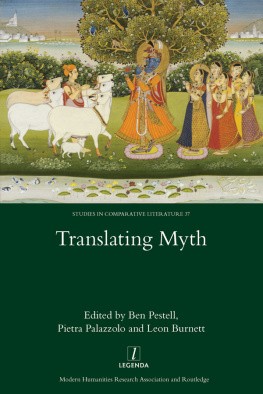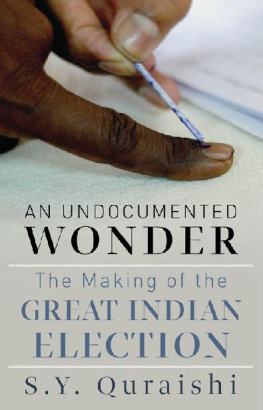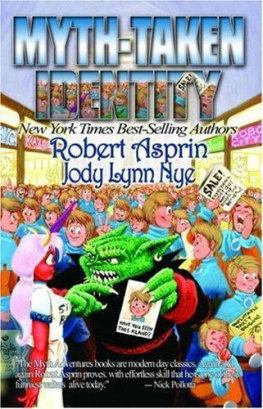S.Y. Quraishi - The Population Myth by S.Y. Quraishi
Here you can read online S.Y. Quraishi - The Population Myth by S.Y. Quraishi full text of the book (entire story) in english for free. Download pdf and epub, get meaning, cover and reviews about this ebook. year: 2021, publisher: HarperCollins Publishers India, genre: Home and family. Description of the work, (preface) as well as reviews are available. Best literature library LitArk.com created for fans of good reading and offers a wide selection of genres:
Romance novel
Science fiction
Adventure
Detective
Science
History
Home and family
Prose
Art
Politics
Computer
Non-fiction
Religion
Business
Children
Humor
Choose a favorite category and find really read worthwhile books. Enjoy immersion in the world of imagination, feel the emotions of the characters or learn something new for yourself, make an fascinating discovery.

- Book:The Population Myth by S.Y. Quraishi
- Author:
- Publisher:HarperCollins Publishers India
- Genre:
- Year:2021
- Rating:5 / 5
- Favourites:Add to favourites
- Your mark:
- 100
- 1
- 2
- 3
- 4
- 5
The Population Myth by S.Y. Quraishi: summary, description and annotation
We offer to read an annotation, description, summary or preface (depends on what the author of the book "The Population Myth by S.Y. Quraishi" wrote himself). If you haven't found the necessary information about the book — write in the comments, we will try to find it.
The Population Myth by S.Y. Quraishi — read online for free the complete book (whole text) full work
Below is the text of the book, divided by pages. System saving the place of the last page read, allows you to conveniently read the book "The Population Myth by S.Y. Quraishi" online for free, without having to search again every time where you left off. Put a bookmark, and you can go to the page where you finished reading at any time.
Font size:
Interval:
Bookmark:
PRAISE FOR THE BOOK
The Population Myth has come at a time when unfounded apprehensions of Muslims emerging as a dominant population group in India are being propagated for political gain. Based on empirical evidence and government data, S.Y. Quraishi busts such a divisive discourse and convincingly shows how population growth among different communities and groups is a function of poor access to basic goods such as education, family planning services and incomes. Beautifully written, this unique book is a must read to understand the complex interrelationships between, population dynamics and fertility, development choices and politics.
Sujatha Rao, former Health Secretary of India
S.Y. Quraishis remarkable career in government saw him work in child development, AIDS control, sports, and finally in the conduct of elections, all involving huge sections of the population and calling for an understanding of crucial issues in democratic governance. He now turns his attention to family planning among the Muslim community, the myths, the prejudices and the facts. This book is important reading not only for demographers but for all those interested in public health administration, health policy and the future of a democratic India.
Keshav Desiraju, former Health Secretary, India, currently Chairman, Population Foundation of India
The Population Myth explodes the myth with demographic evidence and support from the Islamic tenets that Islam is against family planning. The authentic account presented in this valuable contribution must dispel misgivings among those who spread falsehood and ignite communal tensions in India.
Professor Leela Visaria, former President, Asian Population Association, and Director, Gujarat Institute of Development Research
I fully endorse the work because it presents a balanced view and applies Islamic principles to the current situation in a logical manner. It will make a positive impact on the Muslim couples regarding their approach towards family planning.
Dr Jawed Jamil, Professor of Islamic Studies, Yenepoya University, Mangalore, Karnataka
This is a must-read book, which provides compelling evidence to understand family planning perspectives and practices adopted by different religions across countries and in India. Importantly, it also provides convincing pathways to effectively counteract misconceptions, increase behaviour change and reach out family planning services to those in Muslim communities who are still untouched by them.
Poonam Muttreja, Executive Director, Population Foundation of India
This book approaches the vexed issue of religious demography very objectively and more scientifically. A serious assessment from varied dimensions.
Professor K.S. James, Director and Senior Professor, International Institute for Population Sciences
The book has unique contest to religious demography of India. The author places the data and arguments in a comparative perspective especially between religions, which is rare. There is a chapter on family planning practice in Muslim countries which is highly informative. The book also covers the complex aspects of politics of population and lays out a communication strategy for promoting family planning among Muslims as well as other citizens of India.
Abusaleh Shariff, President, Centre for Research and Debates in Development Policy, New Delhi and Bengaluru
Rather than religion, population growth of any group depends on factors such as poverty, status of women, and availability of health facilities. An obvious example is Bangladesh its rate of population growth has fallen drastically, even more so than Indias, because of better gender and health indicators. In India too, the rate of growth of Muslim population in Kerala is far less than the similar rate of growth of Hindu population in UP or Rajasthan. It is generally not known that despite poverty, infant and child mortality among Muslims is lower than the rate among Hindus. These figures persist despite poverty and lower levels of female schooling among Muslims. The practice of within-kin marriage and lower dowry might explain why the girl child is not considered so much of a burden in Muslim households. I am sure Dr Quraishis book would help in clarifying prejudicial views on the population issue that unfortunately persist and are publicized by the vested interests.
Dr N.C. Saxena, former Member, Planning Commission of India
The Population Myth demystifies issues related to Islam on Family Planning. It provides right direction for Family Planning Policy in India. Must read if you are working on this issue.
Dr R.K. Srivastava, former DG, National Institute of Health and Family Welfare, New Delhi

To the unity in diversity Indias unique identity
Contents
Tables
Population of religious communities over Censuses 19512011 (in %)
Hindu and Muslim decadal population growth since 1951
TFR by religion for all states in 200506 and 201516
Use of any method of contraception, NFHS-4 (201516)
Current use of any method of contraception by state, NFHS-4 (201516)
Trend of female sterilization over NFHS-1, NHFS-2, NHFS-3, NHFS-4
Current use of contraception and unmet need for contraception by religion, 2015-16
Total, wanted and unwanted fertility rates by religion
Percentage-point change in family planning acceptance (all methods) across NFHS surveys
Rate of change in family planning acceptance (sterilization)
Attitude of eligible couples towards family planning: 1970 and 1980 (%)
Reasons for current non-use of contraceptive measures among Hindus and Muslims
Source of modern contraceptive methods by religious community, 2015-16
Population projection by religion, all-India
Knowledge of contraceptive methods among married men and women (in %)
Literacy levels lowest in Muslim men
Literacy levels lowest among Muslim women
Net attendance ratio (NAR) lowest in Muslims
Incidence of poverty highest among Muslims
Bank credit (amount outstanding in per cent) lowest for Muslims
Percentage of women in the age group 1549 who received antenatal care from a skilled provider lowest for Muslims
Percentage distribution of live births among women aged 1549 delivered in a health facility lowest for Muslims
Percentage of women in the age group 1549 who received advice on family planning lowest for Muslims
Percentage coverage of ICDS of population 06 years old, by state and Socio-religious Communities (SRCs), 200405, is least for Muslims.
Median age at first marriage for men and women in the age group 2549 by background characteristics, 20152016, similar for Hindus and Muslims
Percentage of women aged 1519 who have had a live birth or who are pregnant with their first child, and percentage who have begun child-bearing highest for Muslims
Percentage of women aged 1549 who heard or saw a family planning message on radio, television, in a newspaper or magazine, or on a wall painting or hoarding, lowest among Muslims
Percentage of men aged 1549 who heard or saw a family planning message on radio, television, in a newspaper or magazine, or on a wall painting or hoarding lowest among Muslims
Unmet need for family planning highest among Muslims
Polygamous marriages in India lowest among Muslims
Sex ratio (females per 1000 males) since 1951
TFR, CPR and unmet need in Muslim countries
A list of corporations showing Muslim representation on the board of directors/governors, showing how under-represented the community is
Figures
Diagram showing a typical demographic transition
Next pageFont size:
Interval:
Bookmark:
Similar books «The Population Myth by S.Y. Quraishi»
Look at similar books to The Population Myth by S.Y. Quraishi. We have selected literature similar in name and meaning in the hope of providing readers with more options to find new, interesting, not yet read works.
Discussion, reviews of the book The Population Myth by S.Y. Quraishi and just readers' own opinions. Leave your comments, write what you think about the work, its meaning or the main characters. Specify what exactly you liked and what you didn't like, and why you think so.









